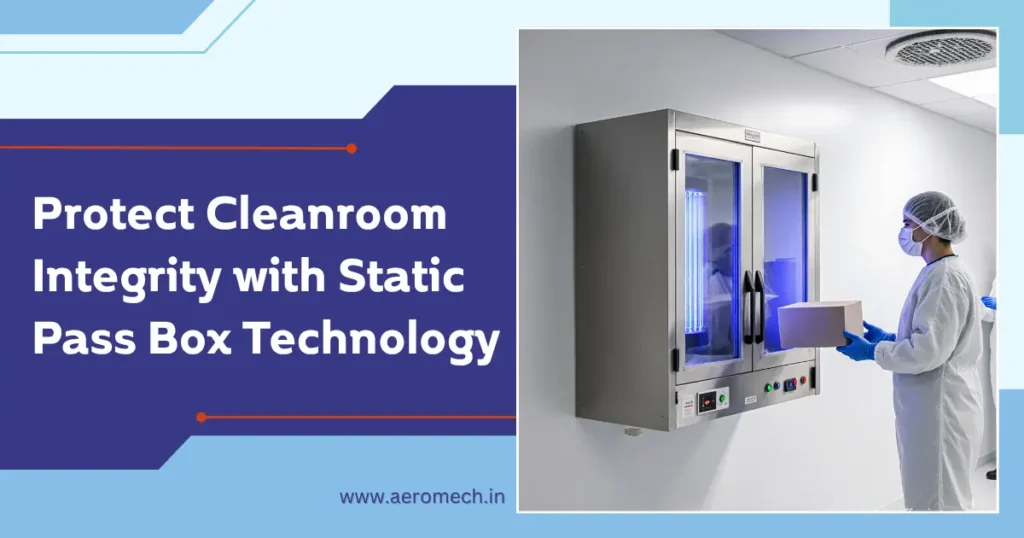
In the high-stakes world of cleanroom operations, a single contaminated material transfer can compromise entire production batches worth millions of dollars. Enter the static pass box—an ingenious yet often underappreciated technology that serves as the critical gatekeeper between cleanroom zones, ensuring materials move safely without breaching sterile environments.
Understanding Static Pass Box Technology
A static pass box is a specialized transfer chamber designed to facilitate the movement of materials, tools, and components between different cleanroom classifications or between cleanroom and adjacent areas without compromising air quality. Unlike its dynamic counterpart, the static version relies on passive contamination control rather than active airflow systems.
Core design elements include:
- Double-door configuration with only one door accessible at a time
- UV sterilization systems operating at 254nm wavelength for pathogen elimination
- Electromagnetic or mechanical interlocking prevents simultaneous door opening
- Stainless steel 304-grade construction ensures durability and easy decontamination
- Visual indicators displaying door status and operational safety
The Critical Role of Interlocking Systems
The interlocking mechanism represents the heart of the pass box functionality. This sophisticated system ensures that when one door opens, the opposite door remains mechanically or electronically locked, creating an airlock principle that prevents direct air exchange between environments.
Why interlocking matters:
- Prevents pressure differentials from equalizing between zones
- Blocks contaminant migration during transfer operations
- Maintains cleanroom classification integrity throughout material movement
- Provides fail-safe protection against human error or protocol violations
UV Sterilization: The Invisible Guardian
Ultraviolet germicidal irradiation at 254nm serves as a powerful decontamination layer. Before materials enter the cleanroom, the UV exposure cycle neutralizes bacteria, viruses, and other microorganisms on surfaces and packaging materials.
Sterilization benefits include:
- Up to 99.9% pathogen reduction on exposed surfaces
- Chemical-free decontamination, avoiding residue concerns
- Rapid cycle times maintain operational efficiency
- Automated integration with door interlocking for consistent application
Industries Where Pass Boxes Are Non-Negotiable
Pharmaceutical manufacturing leads the adoption of pass boxes, where GMP compliance mandates controlled material transfers. A single contamination event can trigger FDA warnings, product recalls, and multi-million dollar losses.
Critical applications span:
- Sterile drug production facilities maintain aseptic conditions
- Electronic cleanrooms protecting sensitive semiconductor components
- Hospital surgical suites ensure sterile instrument transfers
- Food processing facilities meeting HACCP requirements
- Research laboratories preserving experiment integrity
The Contamination Prevention Equation
Studies demonstrate that improper material transfers account for 30-40% of cleanroom contamination events. Pass boxes eliminate this vulnerability by creating a controlled buffer zone where items undergo decontamination before entering critical areas.
The protection layers:
- Physical barrier separating environments
- UV sterilization eliminates surface contaminants
- Interlock system preventing cross-contamination
- Visual/audio alarms ensuring proper protocol adherence
Static vs. Dynamic: Understanding the Difference
Static pass boxes differ from dynamic models in their passive approach. They lack HEPA filtration and active airflow, but excel in within-cleanroom transfers, where both sides maintain similar classifications. This makes them cost-effective and energy-efficient for specific applications.
Important limitation: Static pass boxes should never be used for transfers between cleanroom and non-cleanroom environments—this application requires dynamic pass boxes with active filtration.
Design Features That Ensure Performance
Modern pass boxes incorporate advanced features, enhancing safety and usability:
- Minimum 900 lux interior lighting for clear visibility
- Coved corners eliminate particle accumulation zones
- Clear view panels allow visual inspection without door opening
- Audio-visual alarms alert operators to interlock violations
Investing in Cleanroom Integrity
Industry-leading specialists, such as Aeromech, understand that effective pass box selection requires matching technology to specific contamination control needs, delivering systems that protect both product quality and regulatory compliance across demanding cleanroom applications.